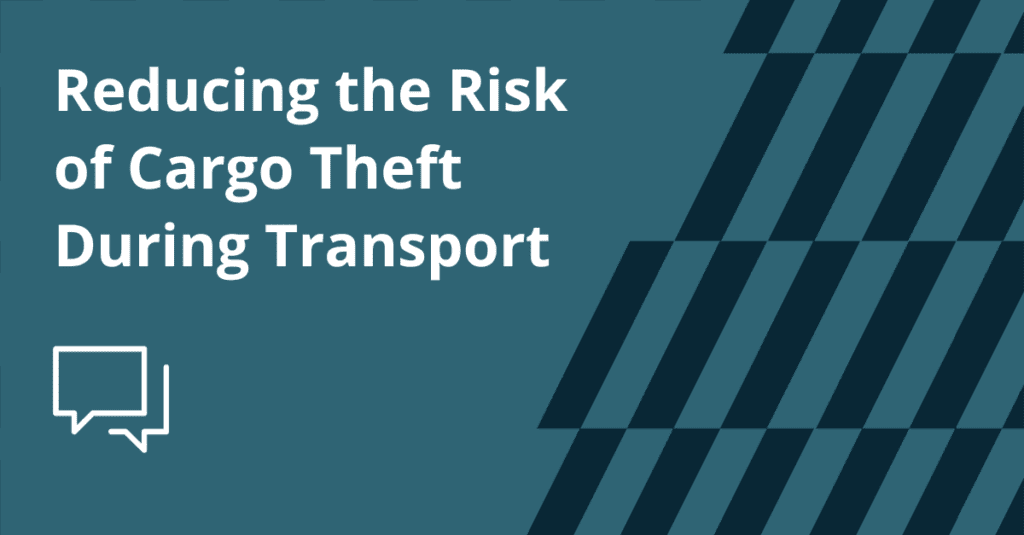
We first wrote this blog back in 2017, and since then, a lot has changed in the logistics and supply chain industry concerning freight cargo crime trends. Despite the shocking statistics, what is positive to note is that technology developments combined with the involvement of industry bodies are helping to combat the issue.
First, let’s look at some of the key trends coming out of Europe.
A recent survey conducted by British Supply Chain Intelligence estimates “that trucks were targeted in 7 out of 10 cargo thefts worldwide in 2020”. Another report from Loadstar.com concurs with a similar stat; “road freight that is either in transit or parked amounts to 87% of all cargo thefts in the supply chain”.
Delving further into the numbers, Loadstar.com also reports that “40% of cargo theft took place at rest stop areas, while unsecured roadside parking accounted for 14% of robberies.” These numbers alone emphasise the immediate necessity that our industry has for more secure parking stops across Europe.
Sholto Millar undertook a survey that draws attention to the urgent requirement for additional secure parking facilities across Europe, with 95% of respondents answering “No” to the question “In your view, is there currently enough secure truck parking around Europe?” When we say a secure parking area, this includes a safe area for drivers to park their trucks and re-charge while on the route. The facility should also have all the necessary amenities, including reservation options, charging solutions, security, and driver facilities, and preferably be located on an optimal route.
On top of the list of targeted goods are; food and beverages, electronics, consumer products, alcohol and tobacco.
Industry Bodies Step in to Reduce Freight Theft Levels
To help mitigate the issue of freight crime, the Transport Asset Protection Association (TAPA) has made amendments to the Facility Security Requirements (FSR) and Trucking Security Requirements (TSR).
One example of the updates made is the addition of the Independent Audit Body Multi-Site certification option designed to identify and promote operational efficiencies between sites so that best practices are shared among members.
Speaking about the impact of these changes on cargo crime, Chair of TAPA’s Worldwide Change Control Board, Paul Linders, said, “The success of our security standards in reducing cargo losses is down to one very important factor – they have been created by the industry, for the industry and are delivered by TAPA.”
ATC is a proud TAPA TSR and FSR certified operator, which affirms our commitment to compliance, legislation, and regulations in operating a successful transport business that is above reproach.
Following and exceeding the standards set out by TAPA, ATC has a set of protocols in place to protect the shipment of goods and give clients peace of mind.
Regular Driver Checks:
All ATC drivers undergo annual license and driver CPC checks to verify the status of all of their licenses and ensure they have completed their CPC training.
GPS Tracking:
Our high-specification fleet has satellite and GPS tracking installed on all trucks and trailers, including anti-tamper countermeasures to keep equipment protected. We use Overhaul, an IoT platform designed to protect shipments by “intelligently mitigating risks in real-time for truly proactive risk management”.
No Transhipping:
ATC does not engage in transhipping, which means that the driver and truck that our shipments take off in remain consistent right to the final mile of the journey.
As well as working with a logistics company that shares these concerns for the security of the shipment, there are other steps that companies can take to protect their valuables during transit. The critical concept to keep in mind is minimising risk and maximising protection.
Data Encryption:
Many of our clients encrypt their data assets to protect them outside their control boundaries.
Secure Packaging:
Those packing the equipment should ensure that they are packed within a sturdy water and shock resistant container. Security tape on the packages will also alert the end-user if the package has been tampered with.
Maintain Discretion:
We recommend avoiding displaying logos or branding prominently on the packaging, making the equipment easily identifiable.
Journey Planner:
Our transport planners work with our clients to design routes that minimise opportunities for theft or tampering. The addition of Overhaul enables all ATC drivers to be vigilant while on the road for real-time risks that might arise.
While freight crime is still prevalent in the industry, some steps can be taken to ensure any potential security breaches are not in your blind spot.
Alan Young
Founder and Director


